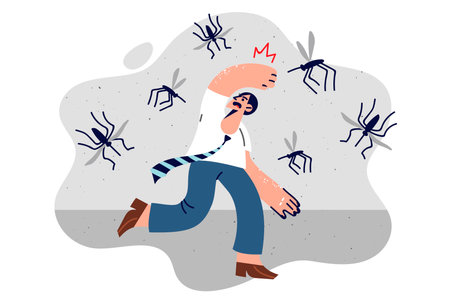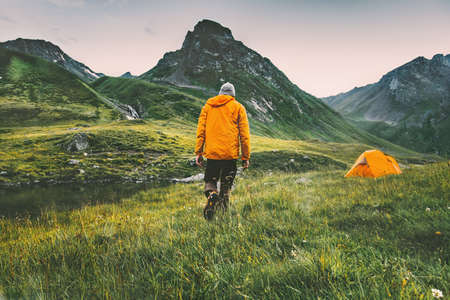Identifying Common Poisonous Plants
Hiking in the United States means sharing the trails with a variety of native plants, some of which can cause serious skin irritation or allergic reactions. The three most common poisonous plants you’re likely to encounter are poison ivy, poison oak, and poison sumac. Recognizing these plants is key to avoiding unpleasant encounters on your outdoor adventures.
Overview of Prevalent Poisonous Plants
| Plant Name | Where Its Found | Key Identification Features |
|---|---|---|
| Poison Ivy (Toxicodendron radicans) | Eastern U.S., Midwest, and along trails in wooded areas, fields, and even urban parks | “Leaves of three, let it be” – clusters of three almond-shaped leaves; may have white berries in late summer; leaves change color through seasons (green in spring/summer, red/orange in fall) |
| Poison Oak (Toxicodendron diversilobum, T. pubescens) | West Coast (Pacific poison oak), Southeast U.S. (Atlantic poison oak) | Also grows in groups of three leaflets; leaves are lobed and look similar to oak tree leaves; can grow as a shrub or climbing vine; may have greenish-white berries |
| Poison Sumac (Toxicodendron vernix) | Wetlands and swampy areas in the eastern U.S., especially the Southeast | 7–13 smooth-edged leaflets per stem; grows as a woody shrub or small tree; produces clusters of white or pale yellow berries; stems are often red or reddish brown |
Tips for Visual Identification
- Avoid any plant with clusters of three leaves.
- Look for glossy or oily-looking leaves, which may indicate the presence of urushiol oil—the irritant responsible for allergic reactions.
- If you see white or pale-colored berries, steer clear—they’re a hallmark of many toxic species.
- Be cautious around vines growing up trees or fences, especially if they display “hairy” aerial roots—this is common for poison ivy.
- Remember that appearance can change throughout the year. Fall colors can make identification tricky, so focus on leaf shape and growth pattern rather than just color.
Expert Tip:
If you’re unsure about a plant’s identity, it’s safer not to touch it. Many seasoned hikers carry a small field guide or use smartphone apps designed to help identify local flora along popular U.S. trails.
2. Understanding the Risks
When hiking or exploring trails across the United States, it’s crucial to recognize the health risks posed by poisonous plants such as poison ivy, poison oak, and poison sumac. Contact with these plants can cause a range of reactions depending on an individuals sensitivity and the extent of exposure. The most common response is an itchy, red rash that may develop into blisters or swelling. For some hikers, however, the consequences can be much more severe.
Common Health Risks Associated With Poisonous Plants
| Risk | Description | Severity |
|---|---|---|
| Allergic Reactions | The plant oils (like urushiol) can trigger allergic responses in about 85% of people, leading to skin irritation and inflammation. | Mild to Moderate |
| Rashes & Blisters | Direct contact often causes red, itchy rashes that may form blisters or oozing sores if scratched or left untreated. | Mild to Severe |
| Severe Complications | Sensitive individuals might experience widespread swelling, difficulty breathing, or infections if the rash covers large areas or gets into the eyes/mouth. | Severe (Requires Medical Attention) |
Who Is Most at Risk?
Certain groups are more vulnerable to serious reactions. Children, older adults, and anyone with a history of allergies may experience more intense symptoms. People who work outdoors or frequently hike in wooded areas are also at increased risk due to repeated exposure.
Key Takeaways for Hikers:
- Even minimal contact with poisonous plants can cause a reaction for sensitive individuals.
- Inhalation of smoke from burning poisonous plants can result in dangerous respiratory issues.
- If you have a known allergy or history of severe reactions, carry necessary medications and know the nearest medical facility on your route.
Understanding these risks is essential for anyone venturing onto U.S. trails—being aware can help prevent uncomfortable or potentially life-threatening situations while enjoying America’s great outdoors.

3. Trail Safety and Prevention Tips
When hiking on U.S. trails, staying vigilant about poisonous plants is essential for a safe and enjoyable experience. Adopting the right preventive measures can greatly reduce your risk of exposure and potential discomfort. Below are some practical tips designed to help you avoid contact with hazardous vegetation while exploring America’s diverse landscapes.
Dress Appropriately for Protection
Wearing the correct clothing acts as your first line of defense against poisonous plants such as poison ivy, poison oak, and poison sumac. Long sleeves, long pants, and high socks create a physical barrier, making it less likely for plants to brush directly against your skin. Opt for lightweight but durable fabrics that offer both comfort and coverage, especially in warm weather.
Recommended Trail Gear
| Gear Item | Purpose | Best Practice |
|---|---|---|
| Long-sleeved shirt & pants | Protects arms and legs from direct plant contact | Tuck pants into socks or boots for extra protection |
| Gaiters | Covers lower legs and ankles | Use in dense brush or off-trail areas |
| Gloves | Shields hands during activities like collecting firewood or clearing campsites | Wear when handling unknown vegetation or debris |
| Closed-toe shoes/boots | Keeps feet safe from ground-level plants and insects | Avoid sandals or open footwear on overgrown trails |
Stick to Marked Trails
The most effective way to steer clear of poisonous plants is by remaining on established and well-marked paths. Venturing off-trail increases your risk of accidental contact, as these areas often harbor more unchecked growth. Trail crews typically maintain marked routes to minimize dangerous encounters, so resist the urge to cut corners or bushwhack through unfamiliar terrain.
Avoid Touching Unknown Plants
If you’re unsure whether a plant is toxic, the safest approach is not to touch it at all. Many poisonous species resemble harmless ones, making identification tricky even for seasoned hikers. Teach children to recognize common hazardous plants before hitting the trail, and make it a rule to admire wildflowers and foliage from a distance.
By combining proper attire, smart gear choices, and a commitment to staying on the trail, you can significantly reduce your chances of an unpleasant encounter with poisonous plants while enjoying America’s beautiful outdoors.
4. First Aid and Immediate Response
If you come into contact with a poisonous plant while hiking on U.S. trails, acting quickly can make a big difference in minimizing symptoms and preventing the rash from spreading. Here’s a step-by-step guide to follow:
Step-by-Step First Aid for Poisonous Plant Exposure
- Leave the Area: Move away from the source of exposure to prevent further contact.
- Avoid Touching Other Parts of Your Body: Try not to touch your face, especially your eyes, mouth, or other sensitive areas.
- Wash the Affected Area Immediately: Use plenty of cool water and mild soap to thoroughly wash the skin as soon as possible. If water is not available, rubbing alcohol or specialized cleansing wipes (like Tecnu) can help remove plant oils.
- Remove Contaminated Clothing and Gear: Carefully take off any clothing, shoes, or accessories that may have touched the plant. Place them in a plastic bag until they can be properly washed at home using hot water and detergent.
- Avoid Scratching: Scratching can worsen irritation and increase the risk of infection.
Over-the-Counter Remedies
| Remedy | How It Helps | Where to Find |
|---|---|---|
| Calamine Lotion | Soothes itching and dries oozing blisters | Drugstores, outdoor retailers |
| Hydrocortisone Cream (1%) | Reduces inflammation and itching | Drugstores, supermarkets |
| Antihistamines (oral) | Eases itching and allergic reactions; helps with sleep if discomfort is severe at night | Pharmacies (e.g., Benadryl) |
| Baking Soda Paste | Homemade remedy for minor itching relief | Mix baking soda with water at home |
| Cool Compresses | Soothes inflamed skin and reduces swelling | Dampen a clean cloth with cold water |
When to Seek Medical Attention
- If the rash covers a large part of your body or is on your face/genitals.
- If you experience difficulty breathing or swallowing—these are signs of a serious allergic reaction (call 911).
- If pus, yellow scabs, or fever develops (possible infection).
- If symptoms persist for more than two weeks or worsen over time.
The Bottom Line
Quick action after exposure to poisonous plants on U.S. trails helps reduce discomfort and prevents further spread. Always keep basic first aid supplies in your hiking kit for peace of mind on every adventure.
5. When to Seek Medical Attention
While most encounters with poisonous plants on U.S. trails can be managed with basic first aid, there are situations where immediate medical attention is essential. Recognizing the indicators of serious reactions and knowing how to communicate your situation in remote areas can be lifesaving.
Indicators of Serious Reactions
| Symptom | Description | Recommended Action |
|---|---|---|
| Severe swelling or blistering | Rapidly spreading rash, large blisters, or intense redness and pain | Seek emergency care as soon as possible |
| Difficulty breathing or swallowing | Tightness in throat, wheezing, coughing, or facial swelling | Call 911 immediately; use an epinephrine auto-injector if available and trained to do so |
| Widespread rash or eye involvement | Rash covers large body areas or affects eyes/mouth/genitals | Seek urgent medical help, especially if vision is affected |
| Fever, chills, or signs of infection | Pus, warmth around the rash, increasing pain after a few days | Contact a healthcare provider promptly for possible antibiotics |
| Nausea, vomiting, or confusion | Feeling faint, dizzy, disoriented after exposure | Treat as a medical emergency; evacuate if necessary |
Communicating in Remote Areas
- Cell Service: Move to higher ground if possible to improve reception. Text messages may send when calls fail.
- Satellite Devices: Use devices like Garmin inReach or SPOT to send SOS signals and communicate your location to emergency services.
- Emergency Contacts: Always inform someone of your planned route and expected return time before heading out. This ensures rescuers have a starting point if you don’t check in.
- Describe Clearly: When contacting help, give clear details: nature of exposure (e.g., poison ivy), symptoms present, exact location (GPS coordinates if available), and number of people affected.
- If Evacuating: Mark your trail for rescuers using visible items (bright clothing or gear) if you must move from your current location.
Remember:
If you are ever in doubt about the severity of a reaction to poisonous plants while hiking U.S. trails, it’s always safer to err on the side of caution and seek professional medical assistance promptly.
6. Educating Your Hiking Group
One of the best ways to stay safe from poisonous plants on U.S. trails is by spreading knowledge within your hiking group. Raising awareness among friends, family, or hiking buddies can help prevent accidental exposure and ensure everyone enjoys a safer outdoor experience. Here are some effective ideas for group education:
Lead Pre-Hike Briefings
Before you hit the trail, take a few minutes to discuss the types of poisonous plants that may be present in the area, how to recognize them, and what steps to take if someone comes into contact with them. A quick review can make a big difference, especially for new hikers or children.
Distribute Educational Materials
Bring printed guides or use mobile apps that identify local poisonous plants. Share these resources during your outings and encourage others to download their own copies. This can be especially useful for larger groups where not everyone has experience with plant identification.
Sample Table: Quick Reference Guide for Common U.S. Poisonous Plants
| Plant Name | Key Features | Where Found | Treatment Steps |
|---|---|---|---|
| Poison Ivy | Three leaflets, often shiny, red in spring | East, Midwest, South US | Wash with soap & water; apply calamine lotion |
| Poison Oak | Lobed leaves in clusters of three | West & Southeast US | Rinse skin ASAP; use antihistamines if needed |
| Poison Sumac | 7-13 leaflets per stem; grows in wet areas | Southeast US, Great Lakes region | Avoid scratching; seek medical help if severe reaction occurs |
Encourage Open Communication
Create an environment where group members feel comfortable speaking up if they’re unsure about a plant or have had possible exposure. Appoint a “safety lead” for longer hikes who’s responsible for first aid supplies and basic treatment knowledge.
Practice Hands-On Learning
If possible, organize workshops or nature walks with local experts who can teach plant identification skills firsthand. This practical experience is invaluable and helps reinforce classroom knowledge out on the trail.
Summary: Safe Hiking Through Shared Knowledge
The more your group knows about poisonous plants and how to avoid them, the better prepared you’ll all be for a safe and enjoyable outdoor adventure. By making education a regular part of your hiking routine, you not only protect yourself but also empower others to do the same.


